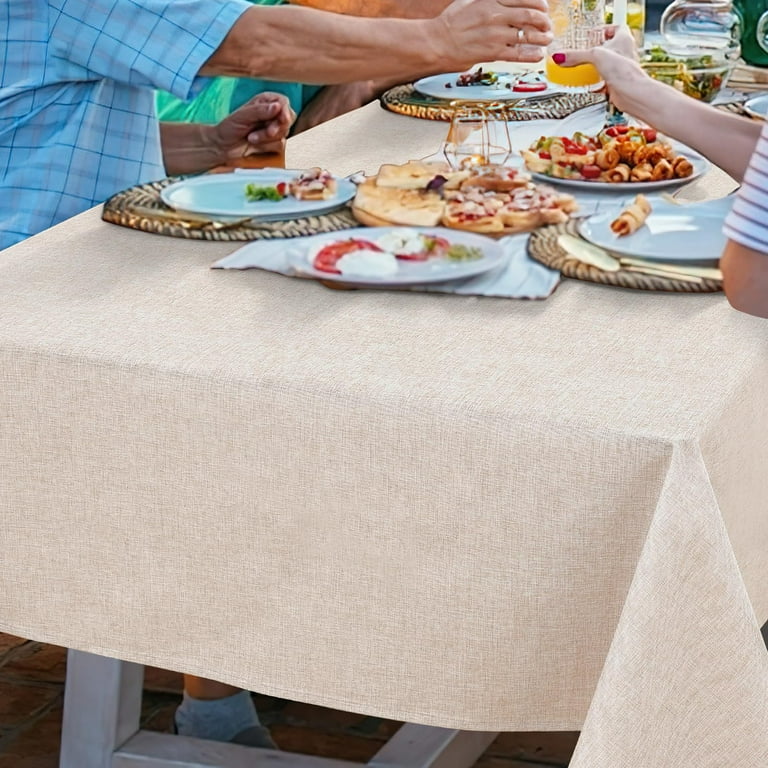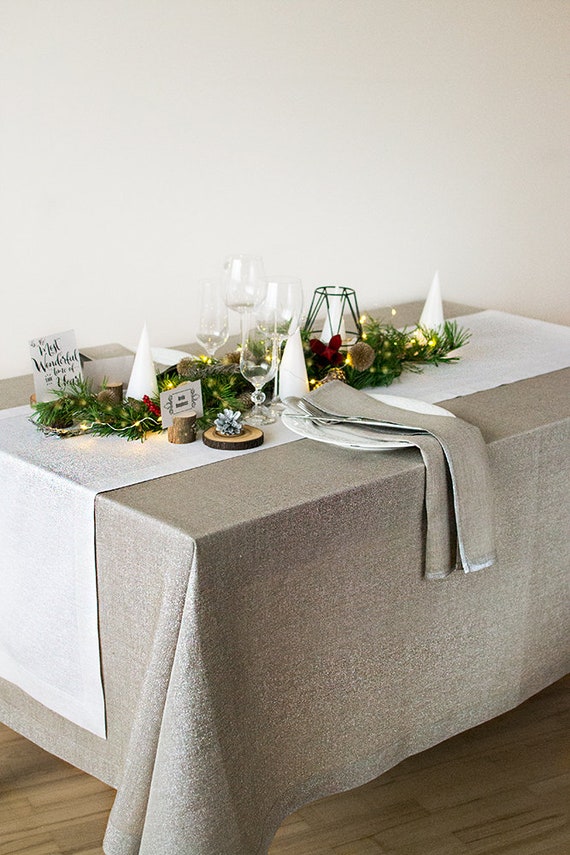Fashionable Table Runner Ideas: Transform Your Eating Experience
Linen Material Technologies: Exploring Modern Trends and Creative Applications in Design and Textile Sector
From lasting manufacturing techniques to innovative weaving innovations, the development of bed linen is reshaping the landscape of the fabric sector. As we dig right into the worlds of creative layout applications and the introduction of bed linen blends and hybrid fabrics, a brand-new chapter unravels in which bed linen's role in future fabric technologies takes facility stage.
Sustainable Practices in Bed Linen Production
Sustainable techniques in linen production have come to be significantly vital in the textile sector's efforts to reduce environmental influence and promote honest sourcing methods. Bed linen, an all-natural fiber derived from the flax plant, offers a series of benefits such as biodegradability, breathability, and toughness. Nonetheless, conventional approaches of linen manufacturing can involve considerable water consumption, pesticide usage, and energy-intensive processes.
To attend to these challenges, many textile suppliers are adopting lasting techniques throughout the linen manufacturing process. This consists of sourcing flax from organic farms that prevent hazardous pesticides and chemicals, applying water-efficient retting techniques to essence fibers from the flax stalks, and making use of environment-friendly dyes and coatings. Additionally, some firms are purchasing sustainable power resources to power their production centers and minimizing waste with recycling and upcycling initiatives.
Technical Advancements in Linen Weaving
With the growing focus on sustainable methods in linen production, the textile market is currently observing a rise in technical advancements particularly focused on reinventing the art of bed linen weaving. These technologies are improving the means bed linen fabrics are produced, offering enhanced effectiveness, high quality, and imagination in weaving methods.
Among the crucial technical advancements in bed linen weaving is the combination of electronic looms. These sophisticated looms are furnished with software application that enables elaborate and complex layouts to be woven with accuracy. By digitizing the weaving procedure, producers can accomplish greater consistency and precision in their bed linen materials.
Moreover, developments in yarn spinning modern technology have enabled the manufacturing of finer and even more resilient linen threads - table cloths. This leads to softer and smoother linen fabrics that maintain their high quality also after numerous uses and washes
In addition, the advancement of environment-friendly dyeing processes and coatings for linen textiles is getting traction. These lasting methods not only decrease the ecological impact yet likewise satisfy the boosting consumer need for fairly generated fabrics.
Creative Layout Applications for Linen
Ingenious imaginative methods are increasingly shaping the imaginative layout applications for bed linen in the textile market. Bed linen's all-natural visual appeal and capability to mix with various other textiles make it a favorite option for producing one-of-a-kind garments and devices that cater to the ecologically mindful customer.
Moreover, designers are explore bed linen in home decor, utilizing its breathable and sturdy nature to craft stylish home furnishings such as drapes, bed linens, and upholstery. The appearance and drape of linen bring a sense of refinement and comfort to indoor areas, including a touch of elegance to contemporary homes.

Linen Blends and Hybrid Fabrics

Crossbreed materials, on the other hand, take the principle of blending a step better by integrating additional components such as metal threads, recycled products, or conductive fibers. These ingenious textiles not only increase the style possibilities yet likewise introduce useful elements like conductivity, antimicrobial residential or commercial properties, or enhanced longevity. Hybrid textiles are progressively being made use of in different markets, consisting of fashion, interior decoration, and technical fabrics, where the demand for multifunctional products is on the surge.
Linen's Duty in Future Textile Innovations

In the world of future fabric innovations, linen is anticipated to be a principal in the development of sophisticated practical textiles. Designers and researchers are exploring methods to improve bed linen's integral qualities through technological developments, such as integrating clever fabrics, nanotechnology, and efficiency finishes. These innovations aim to elevate linen's performance characteristics, making it appropriate for a wider variety of applications, from activewear to safety garments.
In addition, the mix of bed linen with various visit this website other all-natural or artificial fibers opens countless opportunities for developing unique fabrics with one-of-a-kind buildings and capabilities. By leveraging bed linen's features and discovering cutting-edge blends, the fabric sector is positioned to introduce interesting advancements that provide to progressing consumer needs and sustainability requirements.
Final Thought
In final thought, the exploration of sustainable practices, technical advancements, innovative design applications, bed linen blends, and its role in future textile technologies highlight the continuous development of bed linen fabric in the contemporary layout and textile market. With an emphasis on innovation and imagination, the versatility and environmentally friendly nature of bed linen make it a valuable material for developers and suppliers alike, leading the way for additional growths and advancements in the field of fabrics.
As we dive right into the realms of innovative layout applications and the appearance of linen blends and hybrid textiles, a brand-new phase unravels in which bed linen's role in future textile developments takes center stage.
Discovering the fusion of linen with various other textiles has actually led to the development of ingenious blends and crossbreed textiles in the modern fabric market. Bed linen blends supply an unique combination of the characteristics of linen with those of other fibers, resulting in Homepage fabrics that possess enhanced homes such as boosted longevity, improved draping, and reduced wrinkling.The evolution of bed linen blends and crossbreed textiles has actually set the stage for Linen to play a critical function in driving future textile developments.In the realm of future textile innovations, linen is expected to be a vital gamer in the development of advanced functional fabrics.